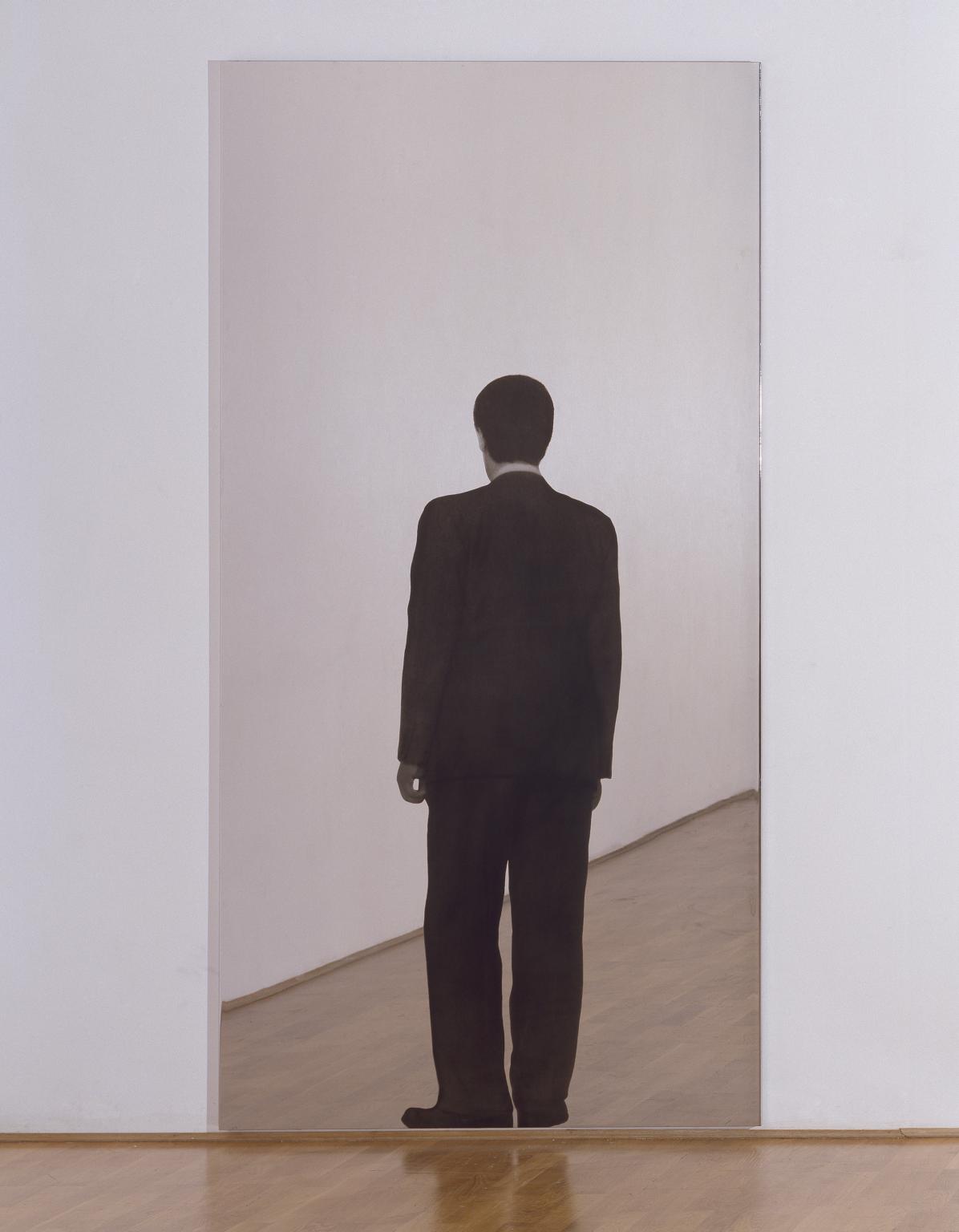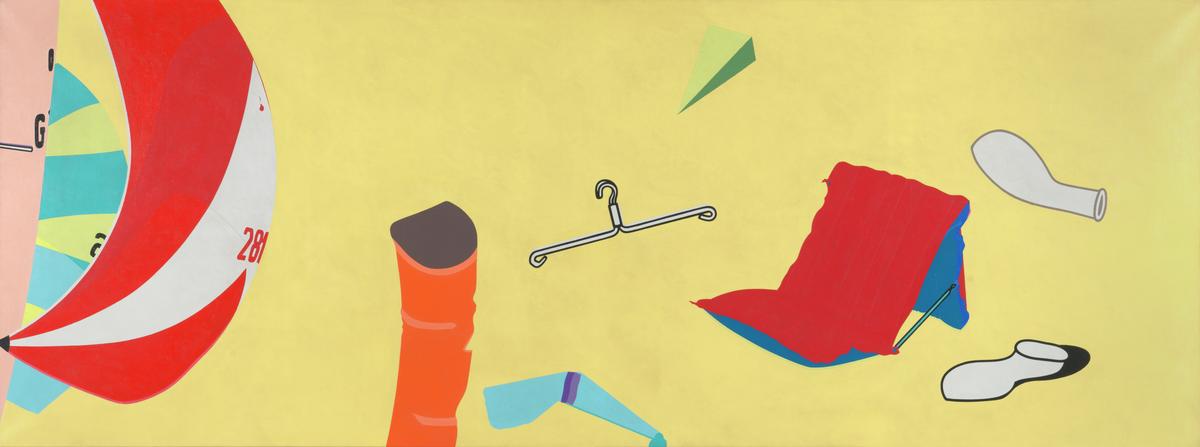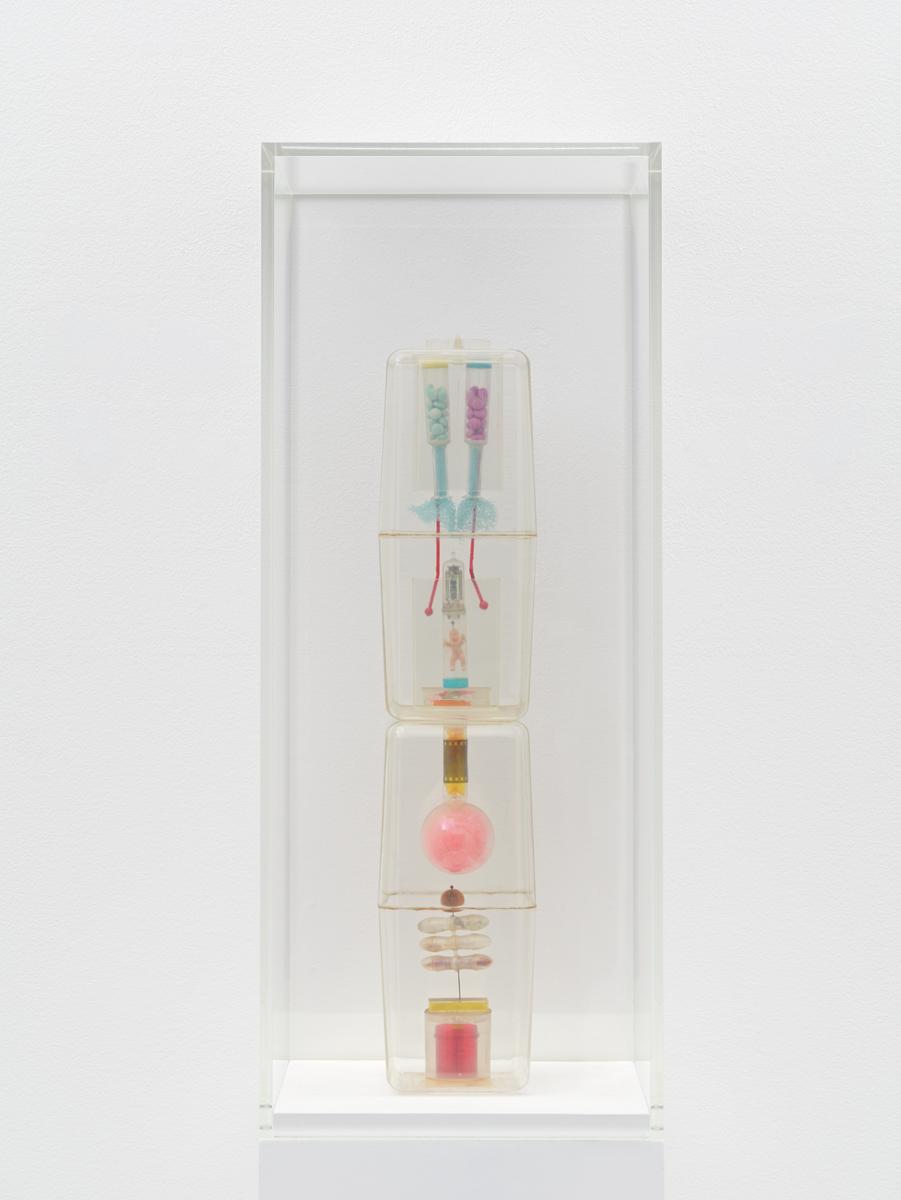12 rooms in Media Networks
The works in this room explore consumerism, mass-produced objects and advertising as the emerging visual language of the 1960s and 1970s
The Western European economic boom which followed the Second World War profoundly altered the lives of millions of people. Artists reacted in different ways to the new social landscape of consumer culture. Some imitated the language of advertising, design and popular media. They reproduced recognisable imagery in paintings as a commentary on their changing society. Others made artworks from objects associated with overproduction. These sculptures often incorporated cheaply made products and brightly coloured synthetic components. For the artists presented in this room, these operations were always ironic. They borrowed the visual language of consumer culture not to celebrate it, but to reveal it as excessive, absurd and shallow.
In 1964, the painter Hervé Télémaque was among the organisers of an influential exhibition titled Mythologies Quotidiennes (Everyday Mythologies), held at the Musée d’Art Moderne in Paris. All of the artists in this room were included except for Tetsumi Kudo, who participated in an expanded second edition staged in 1977.
The exhibition explored the new visual culture of consumer goods and mass media entertainment, which seemed to be replacing the symbols and icons of myth, religion and history. It featured artists associated with the European nouveau réalisme (new realism) movement, who made works out of found objects and rubbish as a way of re-presenting real life. Mythologies Quotidiennes served as a launchpad for the French figuration narrative (narrative figuration) movement, of which Télémaque was a central figure. This style of representational painting infused popular imagery with a surreal and satirical tone. Similar politically charged and media infused figurative styles from across the world can be seen in the Beyond Pop room (Room 12 of the Media Networks display).
Art in this room





